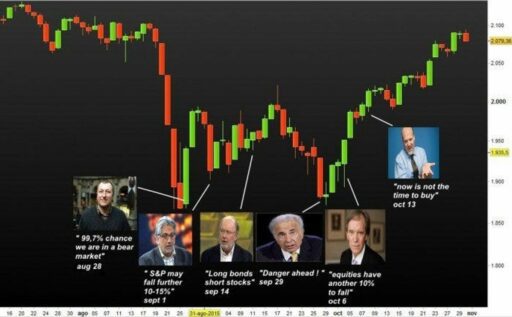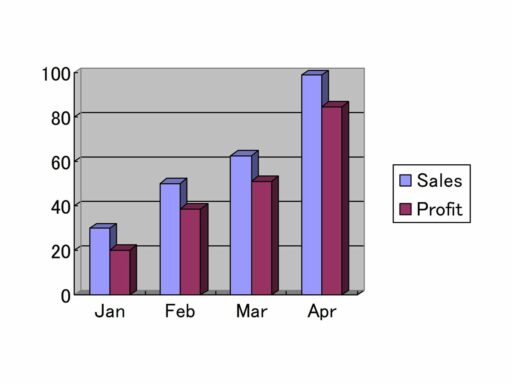Microsoft Corporation, a technology giant, has been a consistent performer in the stock market. Investors and analysts closely watch its financial health, stock performance, and market position to make informed decisions. This comprehensive analysis delves into the current trends affecting Microsoft’s stock price and provides future projections, offering a detailed look at the company’s stability, expert predictions, technical indicators, and strategic investment considerations.
Key Takeaways
- Microsoft’s Total Stockholder Equity remains stable with Common Stock Shares expected to reach 7.2 billion in 2024, and a slight increase in Price Earnings To Growth Ratio to 160.61.
- Wall Street analysts predict an average price target of $488.27 for Microsoft, indicating a potential 15.47% increase from the current price.
- Microsoft’s market value patterns and employee base of 221,000 highlight its significant presence in the software infrastructure sector within the technology industry.
- Technical indicators suggest that Microsoft’s stock is steady with a Sharpe Ratio of 0.19, implying a modest return per unit of risk over the last 3 months.
- Investors are advised to consider Microsoft’s quarterly net working capital trends and technical analysis for informed long-term investment strategies.
Microsoft’s Financial Stability and Stock Performance

Analysis of Total Stockholder Equity and Common Stock Shares
Microsoft’s financial health remains robust, with Total Stockholder Equity showing stability over the past year. The number of Common Stock Shares Outstanding is projected to rise to approximately 7.2 billion by 2024. In contrast, Common Stock Total Equity is expected to see a slight decrease, settling just above $65.5 billion.
The company’s financial structure is a testament to its enduring market presence and investor confidence.
The following table summarizes key financial metrics:
| Metric | 2023 Estimate | 2024 Projection |
|---|---|---|
| Common Stock Shares Outstanding | 7.1B | 7.2B |
| Common Stock Total Equity | $66B | $65.5B |
| Price Earnings To Growth Ratio | 158.50 | 160.61 |
| Price Earnings Ratio | 32.50 | 31.86 |
These figures reflect a company that is not only maintaining its market position but is also poised for future growth. The balance between equity and shares indicates a strategic approach to capital management, which is crucial for long-term success.
Price Earnings To Growth and Price Earnings Ratio Projections
The Price Earnings to Growth (PEG) ratio is a pivotal metric for investors seeking to understand Microsoft’s stock value in relation to its expected earnings growth. Currently, Microsoft’s PEG ratio stands at a stable 160.61, indicating a balance in the market’s valuation of its growth potential against its earnings.
The Price to Earnings (P/E) ratio, at 37.94, reflects the company’s robust financial health and investor confidence in its profitability. This ratio, calculated over the trailing twelve months, offers insight into the premium that investors are willing to pay for a share of Microsoft’s earnings.
The stability of these ratios in the face of market fluctuations underscores Microsoft’s financial resilience and the market’s optimistic outlook on its future performance.
Here is a snapshot of Microsoft’s key valuation metrics:
| Metric | Value |
|---|---|
| PEG Ratio | 160.61 |
| P/E Ratio | 37.94 |
| Market Capitalization | 3.20T |
Investors should monitor these ratios alongside other financial indicators to make informed decisions about the potential growth and profitability of Microsoft’s stock.
Historical Stock Price Adjustments and Recent Filings
Understanding the historical adjustments in Microsoft’s stock price is crucial for investors looking to gauge the company’s performance over time. The Split Adjustment Factor is a key metric, reflecting all splits since a given date and providing insight into the stock’s historical volatility. However, it’s important to note that the closing price is not necessarily indicative of future performance.
Recent filings reveal significant transactions by company insiders, which can be an indicator of the company’s current health. For instance, a recent sale by an officer of the company involved a substantial number of shares:
| Date | Officer Name | Position | Transaction | Shares | Price per Share | Total Value |
|---|---|---|---|---|---|---|
| 5 Feb 2024 | SMITH BRADFORD L | Vice Chair and President | Sale | 1,078 | $404.89 | $436,474 |
| 2 Feb 2024 | SMITH BRADFORD L | Vice Chair and President | Sale | 300 | $406.84 | $122,053 |
| 8 Dec 2023 | SMITH BRADFORD L | Vice Chair and President | Sale | 45,000 | $411.78 | $18,530,010 |
While these transactions are publicly disclosed, they should be interpreted with caution, as they may not always directly correlate with the company’s future prospects.
Earnings history and revisions also play a significant role in understanding stock price movements. The EPS (Earnings Per Share) trend and revisions indicate how the company’s profitability has changed over time and what analysts expect in the future. Growth estimates, comparing Microsoft to industry and sector averages, provide a broader context for evaluating the company’s potential.
Expert Predictions and Price Targets for Microsoft Stock

Wall Street Analysts’ Forecast and Price Target Averages
Wall Street analysts have been closely monitoring Microsoft’s stock, providing insights into future price movements. The consensus among analysts suggests a bullish outlook for Microsoft, with price targets indicating potential growth. The average price target over the last month, based on the estimates of 6 analysts, stands at $490, representing a 15.88% upside from the current price.
In the last 3 months, 10 analysts have set an average price target of $488.27, which implies a 15.47% increase from the last recorded price of $422.85. It’s important to note that these targets are subject to change as market conditions evolve.
The range of price targets also reflects the varying opinions among analysts, with the lowest target set at $298.10 and the highest reaching up to $550.00. This spread indicates the level of uncertainty and the different valuation methods used.
Analysts’ recommendations are a mix of Strong Buy, Buy, Hold, Underperform, and Sell, which can provide investors with a sense of the market sentiment towards the stock. The recommendations are updated frequently, reflecting the latest earnings reports and market trends.
Understanding the Impact of Predicted Price Changes
The landscape of stock market predictions is often a complex interplay of data analysis and investor sentiment. Predictive indicators are increasingly utilized to gauge the potential direction of Microsoft’s stock price. These indicators, while valuable for short-term market timing, are not infallible, especially when considering the unpredictable nature of the market.
Investors should be mindful of the fact that past performance is no guarantee of future gains. The challenge lies in the accurate interpretation of these indicators in the context of Microsoft’s historical price patterns and market drivers. It is essential to align these predictive analytics with related market drivers to enhance the accuracy of forecasts.
The continued strength of Microsoft’s market position, despite occasional price slips, suggests a bullish outlook for the company. However, investors are advised to remain vigilant and consider the broader market trends when evaluating the impact of predicted price changes on their investment strategies.
Comparative Analysis with Industry Benchmarks
In the realm of technology giants, Microsoft’s position is often evaluated in the context of its peers. A comparative analysis with industry benchmarks provides investors with a clearer picture of where Microsoft stands in terms of financial health and market dominance. This analysis encompasses various financial multiples and ratios, offering a side-by-side comparison with related companies.
The comparative approach not only highlights Microsoft’s competitive edge but also sheds light on areas where it may need to bolster its strategies to maintain or enhance its market position.
Here’s a succinct overview of how Microsoft compares with its industry peers:
| Financial Metric | Microsoft | Industry Average |
|---|---|---|
| P/E Ratio | 35.2 | 28.7 |
| PEG Ratio | 2.1 | 1.9 |
| ROE | 40% | 25% |
| Debt/Equity | 0.5 | 0.8 |
The table above indicates that Microsoft has a higher P/E ratio and PEG ratio than the industry average, suggesting a premium valuation. However, its return on equity (ROE) is significantly higher, and it maintains a healthier debt-to-equity ratio, underscoring its financial stability compared to its competitors.
Microsoft’s Market Position and Company Profile

Overview of Microsoft’s Business Sectors and Employee Base
Microsoft’s operational framework is divided into three primary segments: Productivity and Business Processes, Intelligent Cloud, and More Personal Computing. Each segment contributes significantly to the company’s overall revenue, showcasing a diversified business model that mitigates risk and capitalizes on different market opportunities.
| Segment | FY 2022 Revenue (in billions) |
|---|---|
| Productivity and Business Processes | $63.4 |
| Intelligent Cloud | $75.3 |
| More Personal Computing | N/A |
The company’s workforce has seen stability in numbers, maintaining an employee count of 221,000 consistently from September 2022 through to April 2024. This reflects Microsoft’s ability to sustain its human capital amidst the dynamic tech industry landscape.
Microsoft’s strategic segmentation and robust employee base underpin its capacity to innovate and expand across various technology domains, from cloud computing to personal computing solutions.
Performance Metrics and Market Value Patterns
Microsoft’s market value patterns and performance metrics are pivotal in assessing the company’s health and investment potential. The company’s consistent profitability and liquidity are key indicators of its financial stability.
In terms of market value, Microsoft has maintained a robust position, reflected in its stock price stability and growth potential. The analysis of past and present price action is crucial for predicting future movements and understanding the company’s efficiency and financial leverage.
Microsoft’s strategic approach to growth and its ability to maintain solvency amidst market volatility stand as testament to its operational prowess.
Here is a snapshot of Microsoft’s recent market performance:
| Metric | Value |
|---|---|
| Current Stock Price (USD) | 420.49 |
| Market Volatility | Low to Moderate |
| Profitability | High |
| Liquidity Ratio | Healthy |
This table encapsulates the essence of Microsoft’s market value patterns, providing investors with a concise overview of its performance metrics.
Sustainability and Corporate Governance
Microsoft’s commitment to sustainability and robust corporate governance is a cornerstone of its business philosophy. The company’s efforts in these areas are not only ethically commendable but also contribute to its financial stability and attractiveness to investors.
Corporate governance at Microsoft is guided by a set of principles that ensure accountability, fairness, and transparency in all aspects of its operations. The company’s sustainability initiatives are designed to minimize environmental impact and promote long-term ecological health.
- Accountability to stakeholders
- Fairness in operations
- Transparency in disclosures
Microsoft’s adherence to these principles is reflected in its consistent reporting and active engagement with stakeholders, reinforcing its market position as a responsible leader.
The following table summarizes key aspects of Microsoft’s corporate governance and sustainability efforts:
| Aspect | Description |
|---|---|
| Board Diversity | Representation of diverse backgrounds |
| Environmental Initiatives | Programs to reduce carbon footprint |
| Social Responsibility | Community engagement and philanthropy |
| Governance Framework | Policies ensuring ethical business practices |
Investors often look beyond the numbers to the qualitative measures that indicate a company’s long-term viability. Microsoft’s focus on sustainability and governance is a testament to its forward-thinking approach and its potential for sustained growth.
Technical Analysis and Predictive Indicators for Microsoft

Daily Demand and Supply Dynamics
The daily demand and supply dynamics of Microsoft stock are critical in understanding short-term price movements. Key indicators such as the Accumulation Distribution Line and the Balance of Power reflect the underlying market sentiment and investor behavior. For instance, a Balance of Power (BOP) value of -0.18 suggests a slight edge towards selling pressure, while an Accumulation Distribution (AD) value of 182,759 indicates a level of stock accumulation among traders.
The interplay between demand and supply can be quantified through various technical indicators, providing a snapshot of the market’s pulse on any given day.
The following table summarizes some of the daily indicators that offer insights into Microsoft’s stock demand and supply dynamics:
| Indicator | Value |
|---|---|
| Accumulation Distribution | 182,759.0 |
| Balance of Power | (0.18) |
| Rate of Daily Change | 1.0 |
| Day Median Price | $375.32 |
| Day Typical Price | $375.33 |
| Price Action Indicator | ($0.29) |
| Period Momentum Indicator | 45.14 |
| Relative Strength Index | 58.1 |
These indicators, when analyzed in conjunction with market trends and microeconomic factors, can provide a more nuanced understanding of Microsoft’s stock behavior on a daily basis.
Intrinsic Value Estimation Using Technical Indicators
Intrinsic value is a cornerstone concept in investment analysis, representing the true underlying value of a company like Microsoft. Investors often calculate this value to determine the ideal time to buy a stock, aiming to purchase when the market value is below the intrinsic value. However, market value can be swayed by numerous external factors unrelated to the company’s actual business performance, leading to significant discrepancies between the two.
Technical analysis serves as a tool to align market price with intrinsic value, utilizing historical trading patterns and statistical techniques. By focusing on price trends and conditions, analysts aim to predict future movements and identify the real value of Microsoft’s stock. The following table summarizes key technical indicators used in this analysis:
| Indicator | Description | Relevance to Microsoft |
|---|---|---|
| Piotroski F Score | Assesses financial health | Indicates stability |
| Efficient Frontier | Risk-return analysis | Portfolio positioning |
| Idea Optimizer | Portfolio optimization | Strategic investment |
The intrinsic value, derived from technical indicators, provides a more nuanced understanding of Microsoft’s stock potential, beyond the surface-level market price fluctuations.
It is essential for investors to consider both intrinsic and market values when making investment decisions, as this can lead to more informed and strategic choices in the volatile stock market.
Volatility and Risk Assessment
Assessing the volatility and risk of Microsoft stock is crucial for investors to understand potential price fluctuations and to make informed decisions. The Risk Adjusted Performance (RAP) measure is a key indicator of how well the investment’s returns compensate for the risk taken. Microsoft’s RAP stands at 0.0968, suggesting a moderate level of risk-adjusted return.
Microsoft’s systematic risk components, including various volatility indicators, provide a comprehensive view of the stock’s risk profile. Investors can use these metrics to gauge the firm’s expected performance in different market conditions.
The table below summarizes key risk metrics for Microsoft:
| Metric | Value |
|---|---|
| Risk Adjusted Performance | 0.0968 |
| Jensen Alpha | 0.0871 |
| Total Risk Alpha | (0.02) |
| Sortino Ratio | 0.0792 |
| Treynor Ratio | 0.1862 |
| Downside Deviation | 1.06 |
| Information Ratio | 0.0715 |
| Maximum Drawdown | 5.31% |
| Value At Risk | (2.07%) |
| Potential Upside | 2.11% |
Understanding these figures is essential, as they reflect the potential for both gains and losses. For instance, the Maximum Drawdown indicates the largest potential decrease in value Microsoft’s stock has experienced, while the Potential Upside points to the possible gains on a particularly good trading day.
Investment Strategies and Future Outlook for Microsoft

Analyzing Quarterly Net Working Capital Trends
Microsoft’s net working capital has been a critical indicator of the company’s financial health and liquidity. The latest figures show a robust net working capital of $26.38 billion, reflecting the company’s ability to meet its short-term obligations. This figure is particularly important when considering Microsoft’s strategic investments and shareholder returns, such as the $8.4 billion returned to shareholders in FY24 Q2.
The following table summarizes the recent trends in Microsoft’s net working capital over the past quarters:
| Quarter | Net Working Capital (Billion $) |
|---|---|
| FY23 Q4 | 24.5 |
| FY24 Q1 | 25.2 |
| FY24 Q2 | 26.38 |
Microsoft’s consistent increase in net working capital suggests a stable financial trajectory, which is essential for sustaining growth and navigating market fluctuations.
With a projected increase in common stock shares outstanding to 7.2 billion and a net income applicable to common shares of $87.4 billion, Microsoft’s financial stability appears to be on a positive path. The company’s ability to generate free cash flow and maintain a healthy cash reserve supports its operational and strategic flexibility.
Evaluating Long-Term Investment Horizons
When considering Microsoft as a long-term investment, it’s crucial to look beyond the short-term volatility and focus on the company’s ability to sustain growth over time. Because stock prices react to revisions, buying stocks with rising earnings estimates can be very profitable.
In the context of Microsoft, evaluating the company’s long-term potential involves analyzing its historical performance, current financial health, and future growth prospects. While traders with a short-term horizon may leverage predictive indicators, these tools are often less impactful for long-term investment strategies.
In summary, you can determine if Microsoft’s financials are consistent with your investment objective by following a structured approach.
Understanding the inherent challenges of forecasting, investors should be aware that past performance is no guarantee of future gains. Nonetheless, by examining Microsoft’s profitability and financial stability, one can make more informed decisions about the potential for long-term value creation.
Strategic Considerations for Potential Investors
When considering an investment in Microsoft, it’s crucial to align the company’s financials with your investment objectives. Assessing Microsoft’s profitability and growth potential is key to making an informed decision. The company’s pivot from desktop to cloud computing and AI has been widely recognized, suggesting a forward-thinking approach that could influence the stock’s future performance.
In summary, the following steps can guide you through the analysis of Microsoft’s financials:
- Review recent quarterly and annual earnings growth.
- Evaluate the impact of new or game-changing products and services.
- Consider revenue growth, especially in not-yet-profitable or recent IPO companies.
Remember, these guidelines are a starting point. It’s essential to look at broader stock market indicators, conduct further research, and seek professional advice if necessary.
The CAN SLIM system provides a structured approach to investing, emphasizing the importance of strong earnings growth and innovative products. By following these principles, investors can position themselves to capitalize on Microsoft’s market movements and long-term value creation.
Conclusion
In summary, Microsoft’s stock price analysis reveals a company with stable stockholder equity and a projected increase in common stock shares outstanding by 2024. While the Price Earnings To Growth Ratio is expected to rise, the Price Earnings Ratio may see a slight decline. Wall Street analysts forecast a potential average price target of $488.27, indicating a positive outlook. Investors are encouraged to consider Microsoft’s steady performance, Sharpe Ratio, and various technical indicators when evaluating the stock’s volatility and potential as an investment. With a comprehensive approach that includes financial statement analysis, predictive technical indicators, and a keen understanding of market trends, investors can make informed decisions about Microsoft’s stock. As always, it is crucial to stay updated with the latest financial data and market analysis to navigate the ever-evolving landscape of the technology sector.
Frequently Asked Questions
What is Microsoft’s current stockholder equity and common stock shares projection for 2024?
Microsoft’s Total Stockholder Equity is showing stability, and the projection for 2024 indicates that Common Stock Shares Outstanding is likely to increase to about 7.2 billion, while Common Stock Total Equity may slightly exceed 65.5 billion.
What are the future projections for Microsoft’s Price Earnings To Growth and Price Earnings Ratio?
The Price Earnings To Growth Ratio is expected to rise to 160.61 in 2024, whereas the Price Earnings Ratio is anticipated to decrease to 31.86 in the same year.
How has Microsoft’s stock price history been adjusted based on recent filings?
Microsoft Stock price history is adjusted to account for all recent filings, providing an accurate representation of the stock’s historical performance.
What is the average price target for Microsoft stock according to Wall Street analysts?
Based on the predictions by 10 Wall Street analysts over the last 3 months, the average price target for Microsoft stock is $488.27, which represents a 15.47% increase from the last price of $422.85.
How does Microsoft’s daily predictive indicators assist investors?
Microsoft’s daily predictive indicators help investors analyze daily demand and supply dynamics, volume, price patterns, and swings to determine the real value of Microsoft stock using internally-developed statistical techniques.
What should investors consider when evaluating Microsoft’s long-term investment potential?
Investors should consider Microsoft’s financial stability, growth ratios, technical indicators, and market volatility, as well as the company’s overall market position and sector performance when evaluating its long-term investment potential.





